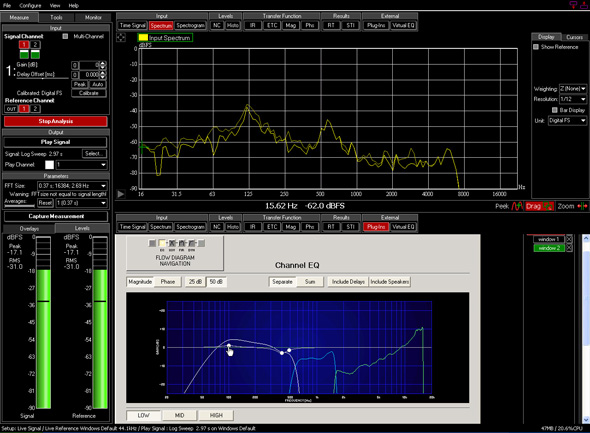
The latest release of IRIS-Net software (version 2.3.0) provides a significant expansion of the Electro-Voice NetMax N8000 digital matrix controller task engine by adding a variety of new logic blocks, including delay, timer and debounce, as well as newly added functions for control of RCM-810 modules.
These additions allow a greater level of flexibility when programming complex logic sequences for custom applications.
Additionally, the inclusion of the RCM-810 functions allows a user to configure the GPIs and GPOs of the RCM-810 module to interact with the logic functions of the NetMax task engine, which provides the ability to expand the existing GPI/O ports on the N8000 hardware for remote digital control interface.
IRIS-Net v 2.3.0 also includes a new loudspeaker protection algorithm for RCM-26 and Tour Grade Series power amplifiers.
The Thermal Energy Protection and Management Limiter (or TEMP Limiter) is an advanced DSP algorithm that is able to calculate and track the voicecoil temperature and apply specific gain reduction as needed to maintain the temperature of the components within safe margins.
This is a different method to simply applying RMS limiting or peak limiting, because it is a dynamic behavior that has been tailored to how the program material, DSP and amplifier interact with the actual transducer components, as opposed to simply applying a set of control rules to the drive level based only upon the electronics.
The TEMP Limiter actually works with the specific characteristics of the transducers it is driving, based on a behavior model derived from specific transducer characteristics and parameters measured and created by Electro-Voice loudspeaker engineering.
The combination of the TEMP Limiter with the Existing Peak Anticipation Limiter (PA Limiter) provides the industry’s most advanced and best-sounding loudspeaker protection package.
New in IRIS-Net V2.3.0:
NetMax
New features of Electro-Voice N8000 Task Engine
– Timer block
– Analog delay block
– Logic delay block
– Debounce block
– Calendar entry block
– Using common CobraNet parameters as inputs/outputs is now possible
– Using following RCM-810 parameters as inputs/outputs is now possible: GPIState1, GPIState2, GPOState1, GPOState2, Power, Out1.Mute, Out2.Mute, Out3.Mute, Out4.Mute, Out5.Mute, Out6.Mute, Out7.Mute, Out8.Mute
Reduced DSP cycles for EQ of N8000 with more than eight bands
Supervision of RCM-810 remote amplifiers using a N8000
RCM-26
Compressor in output channel is replaced by TEMP limiter
The maximum allowed amplifier output voltage is now used as additional value of the Peak limiter threshold parameter
Notes on the new TEMP limiter (Thermal Energy Management and Protection) in RCM-26
Firmware in RCM-26 MUST be upgraded to make use of the new function.
Old projects using the Compressor parameter should be checked for proper function, as this parameter will be removed after update. Project and GUI may need to be updated due to this change.
Projects created with IRIS-Net V2.3.0 cannot be used with RCM-26 devices with old firmware.
Projects created with the Project Generator are NOT affected by this change, and these projects can be used with IRIS-Net V2.3.0.
Currently existing SPS files may be used with new RCM-26 firmware.
REV
Electro-Voice REV firmware update is now possible within IRIS-Net, via the UCC1 firmware update dialog. Standalone REV update utility no longer needed.
IRIS-Net V2.3.0 includes these changes and numerous other improvements and enhancements. Please see the Read Me file for a complete list and details.
Minimum System Requirements:
Processor: Intel Pentium III 1 GHz or equivalent (better is recommended)
OS: Windows 2000, XP or Vista (32 Bit versions only, Vista users: see installation note)
RAM: 512 MB (more is recommended)
Hard Disk: 300 MB of free space
Video: 1024 x 768, High Color (16 Bit)
Network: Ethernet port and/or 1 USB port per 100 amplifiers

